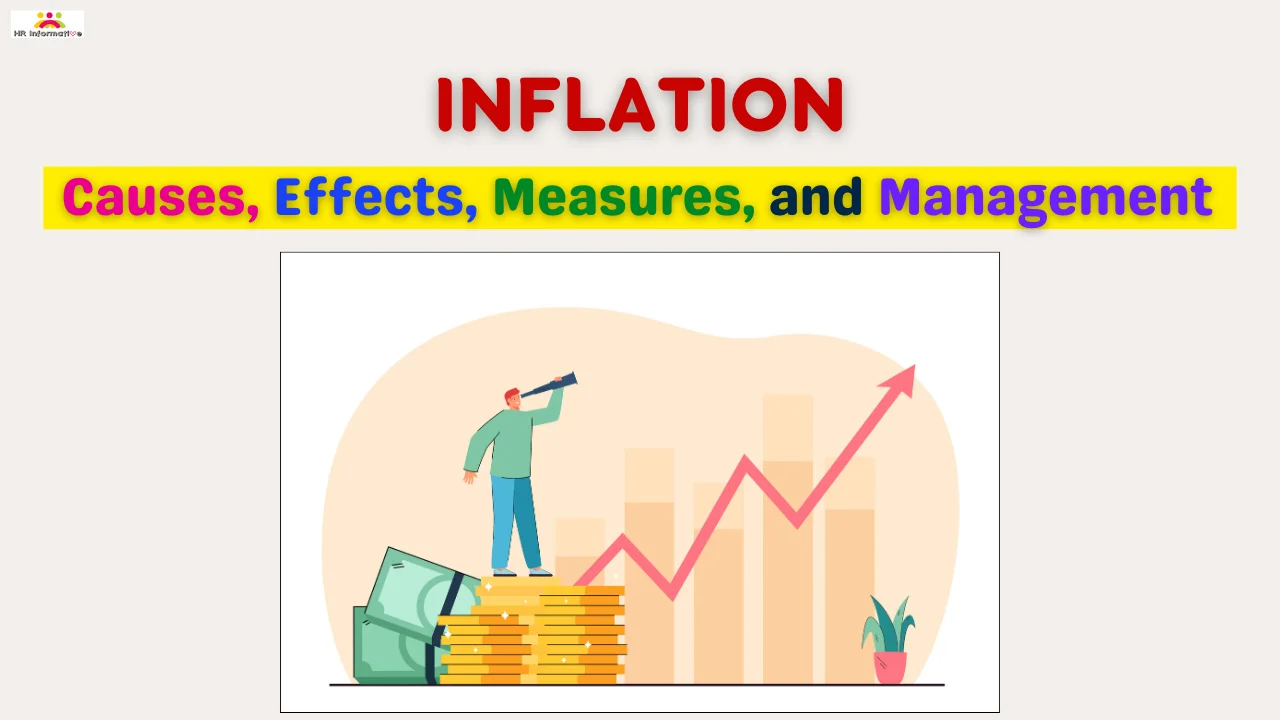Inflation is a complex economic phenomenon that affects individuals, businesses, and governments worldwide. It is the sustained increase in the general price level of goods and services over time, leading to a decrease in the purchasing power of a currency. In this article, we will delve into the various aspects of inflation, including its causes, effects, measures, and the role it plays in economic policies.
What is Inflation?
Simply put, inflation is the sustained increase in the price level of goods and services in an economy over time. Imagine buying a cup of chai for ₹10 today; a year later, due to inflation, it might cost ₹11. This means your ₹10 has less purchasing power, and you can buy less with it.
Causes of Inflation
There are several theories and schools of thought about the root causes of inflation:
- Demand-Pull Inflation: One of the primary causes of inflation is an excess of aggregate demand in the economy. When the demand for goods and services surpasses their supply, producers may respond by raising prices. This is often linked to factors such as increased consumer spending, government expenditure, or investment.
- Cost-Push Inflation: Cost-push inflation occurs when the cost of production for goods and services rises, leading producers to pass on these increased costs to consumers. Factors like rising wages, increased raw material prices, or disruptions in the supply chain can contribute to cost-push inflation.
- Built-In or Wage-Price Inflation: This type of inflation is characterized by a self-perpetuating cycle where workers demand higher wages, and producers, facing increased labor costs, raise prices. The higher prices, in turn, prompt workers to seek higher wages, creating a continuous feedback loop.
- Monetary Factors: Changes in the money supply can also contribute to inflation. If a central bank engages in excessive money printing, it can lead to an oversupply of money in the economy, potentially fueling inflation. This is often associated with hyperinflationary scenarios in extreme cases.
Effects of Inflation
There are the following effects of inflation:
- Reduction in Purchasing Power: Inflation erodes the purchasing power of money, meaning that the same amount of currency can buy fewer goods and services. This reduction in purchasing power can impact individuals’ real income and their ability to maintain a certain standard of living.
- Uncertainty and Economic Distortions: High or unpredictable inflation rates can create uncertainty in the economy. Businesses may hesitate to invest, and consumers may delay spending decisions, leading to economic distortions and inefficiencies.
- Interest Rates and Financial Markets: Central banks often respond to inflation by raising interest rates. Higher interest rates can influence borrowing costs, investment decisions, and the performance of financial markets. Investors may seek assets that can outpace inflation, such as stocks or real estate.
- Distributional Effects: Inflation does not affect all individuals and groups uniformly. Those with fixed incomes or savings may see a decline in their real purchasing power, while debtors may benefit from the diminished real value of their debt.
Measuring Inflation
There are the following keys to measuring inflation:
- Consumer Price Index (CPI): CPI is a widely used measure of inflation that tracks changes in the prices of a basket of goods and services commonly consumed by households. It provides a representative snapshot of the cost of living for the average consumer.
- Producer Price Index (PPI): PPI measures the average change over time in the selling prices received by domestic producers for their goods and services. It gives insights into inflationary pressures at the production level.
- GDP Deflator: The GDP deflator is another indicator that reflects changes in the overall price level within an economy. It is calculated by dividing the nominal GDP by the real GDP and multiplying by 100.
Managing Inflation
There are the following processes to manage inflation:
- Monetary Policy: Central banks use monetary policy tools, such as adjusting interest rates and open market operations, to control inflation. Raising interest rates can help reduce inflation by curbing borrowing and spending.
- Fiscal Policy: Governments can use fiscal policy, involving changes in taxation and government spending, to manage inflation. Reducing government expenditure or increasing taxes can help cool an overheated economy.
- Supply-Side Policies: Structural reforms aimed at improving the efficiency of markets, reducing production costs, and fostering competition can address the root causes of inflation, especially in the case of cost-push inflation.
Conclusion
Inflation is a multifaceted economic phenomenon with wide-ranging implications for individuals, businesses, and governments. Understanding its causes, effects, and measurement methods is crucial for formulating effective economic policies. Striking a balance between maintaining price stability and promoting economic growth is a perpetual challenge for policymakers around the world. As economies evolve, the study and management of inflation remain integral to ensuring sustainable and inclusive economic development.
FAQs
Q1: What is inflation?
Ans: Inflation is the sustained increase in the general price level of goods and services over time, leading to a decrease in the purchasing power of a currency.
Q2: What causes inflation?
Ans: Inflation can be caused by factors such as excess demand, rising production costs, self-perpetuating wage-price cycles, and changes in the money supply.
Q3: How does inflation impact individuals?
Ans: Inflation reduces the purchasing power of money, affecting real income and the ability to maintain a certain standard of living.
Q4: What are the effects of inflation on the economy?
Ans: Effects include economic distortions, uncertainty, changes in interest rates, and distributional impacts on individuals and groups.
Q5: How is inflation measured?
Ans: Common measures include the Consumer Price Index (CPI), Producer Price Index (PPI), and GDP Deflator, reflecting changes in the prices of goods and services.
You May Read Also :
- Demystifying Mutual Funds: A Comprehensive Guide to Investing Together
- Gross Domestic Product (GDP), Components, Calculation, Importance, Limitation
- Sweep-In Fixed Deposit, Key Features, Benefits, Sweep Mechanism, Minimum Requirement to Open
- EEE in Income Tax: A Triple Tax Exemption Boon for Savvy Investors in India



